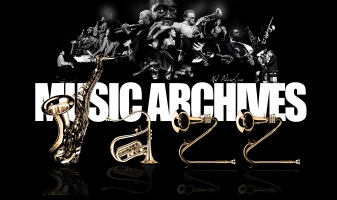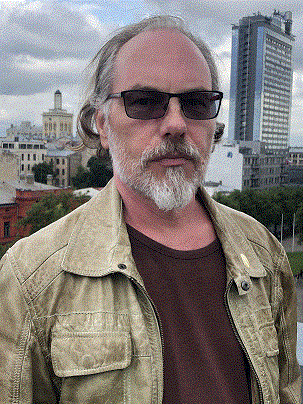
 |
Jazz Greats in Paris |
Post Reply 
|
| Author | |
snobb 
Forum Admin Group 

Site Admin Joined: 22 Dec 2010 Location: Vilnius Status: Offline Points: 30606 |
 Post Options Post Options
 Thanks(0) Thanks(0)
 Quote Quote  Reply Reply
 Topic: Jazz Greats in Paris Topic: Jazz Greats in ParisPosted: 18 Jun 2017 at 12:37am |
|
Ever since the end of the First World War, France has been a center of activity and a place of honor for American jazz musicians who were often denied both—as well as fundamental civil rights—in the United States. In the alluring, atmospheric book “Jazz Images” (published by Elemental Music Records S.L.), the late photographer Jean-Pierre Leloir conveys in images the French love of jazz and its heroes. Leloir, who worked for a wide range of publications, was able to take his photographs because the great musicians of the time (the book mainly spans the mid-fifties through the late sixties) came to France to perform, whether in Paris clubs and theatres or at the Antibes Jazz Festival, and many of the musicians whose portraits he took or whom he documented in concert were the luminaries of jazz modernity. The photographs themselves suggest the high regard the French held for American musicians; most are in color, a quality rare among photographs of these musicians taken in the United States at the same time. Leloir exhibited impeccable taste in his choice of subjects, including advanced modernists (such as Ornette Coleman and Eric Dolphy) who were controversial at home. His timing was also tragically good. Dolphy was photographed in 1964, only eleven days before his death, in Berlin, from diabetic shock. Leloir photographed Billie Holiday in November, 1958, at a time when she was deprived of her right to perform in New York clubs because she, like many musicians, was denied a license, or “cabaret card,” due to drug charges—for which the police hounded her even in the hospital where she died, in July, 1959. The photograph of the intricately imaginative twenty-four-year-old pianist Dick Twardzik, seen alongside Chet Baker (with whose quartet he travelled to France), was taken in Paris sometime in October, 1955; on October 21st, Twardzik died of a drug overdose in a Paris hotel. The book also includes such classic-era jazz musicians as Coleman Hawkins, the first major tenor-saxophone soloist, who joined the Fletcher Henderson Orchestra in 1923—and whose playing advanced with the times. (Hawkins recorded with Thelonious Monk and Miles Davis in the mid-forties, with Monk and John Coltrane in 1957, and with Sonny Rollins in 1963.) In 1957, Leloir photographed Sidney Bechet, one of the first great jazz soloists, period; after hearing Bechet in London in 1919, the Swiss conductor Ernest Ansermet made him the subject of the first major piece of jazz criticism ever written. (It was written in French.) Leloir photographed Mahalia Jackson in 1952, and Louis Armstrong in 1960; the photograph of the saxophonist Lester Young was taken in Paris, in January 1959, less than two months before his death. Many of the French concerts by the artists in Leloir’s book—indeed, many of the performances at which he photographed these musicians onstage or backstage—were recorded, some officially, some not. I’ve pulled together a Spotify playlist of performances in France by the musicians in the dossier that’s meant to put sounds to the images. I’ve tried to stick as close as possible to the date of the photographs, and, where I couldn’t find French performances on Spotify (even if they exist elsewhere—don’t throw out your CDs), I sought other European concerts or studio sessions from the period. In the case of Dolphy, he came to Europe in 1964 with Charles Mingus’s band; the composition “So Long Eric” highlights Dolphy’s plan to leave the group and stay for a while in Europe, and features a superb solo by him. I’ve also added a few noteworthy French performances by artists who do not appear in the dossier, such as Bud Powell, the pianist whose mercurial style, forged alongside Charlie Parker and Dizzy Gillespie, revolutionized the art. Powell spent most of his last years, from 1959 through 1964, in Paris. (He died in New York, in 1966, at the age of forty-one.) Powell’s time in Paris is the basis for Bertrand Tavernier’s movie “’Round Midnight,” in which the mighty saxophonist Dexter Gordon (heard on this playlist with Powell in 1963, from the album “Our Man in Paris”) stars, and which he infused with his own experience, as well. While living there, Powell was befriended by the enthusiast Francis Paudras, at whose home Powell recorded, casually but brilliantly, as he did in New York. The history of jazz is inseparable from the history of the racist afflictions endured by its musicians and by other black Americans. In 1944, the twenty-year-old Powell was beaten on the head by Philadelphia police and was never quite himself again. In 1958, Delaware police officers clubbed Monk on the hands. In 1959, New York police bashed Davis on the head and arrested him while he was standing on the sidewalk in front of the club where he was performing. Paris may not have been a panacea, but it was, for some musicians, a respite and, for others, even a refuge; it instilled performances there, and in Europe over all, with an expansiveness that’s matched by the musicians’ reflective repose in Leloir’s images. from www.newyorker.com |
|
 |
|
Post Reply 
|
|
|
Tweet
|
| Forum Jump | Forum Permissions  You cannot post new topics in this forum You cannot reply to topics in this forum You cannot delete your posts in this forum You cannot edit your posts in this forum You cannot create polls in this forum You cannot vote in polls in this forum |